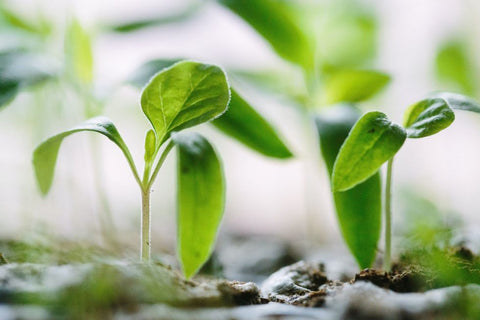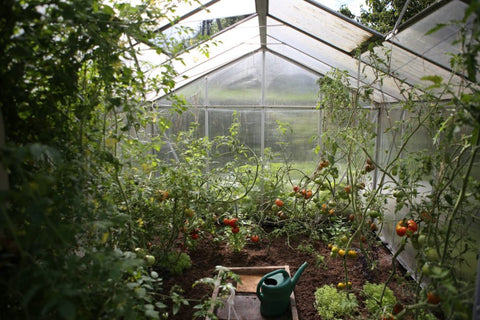Nobody enjoys dealing with indoor herb garden bugs or diseases, especially when it comes to caring for your plants. While these issues can be, well, pests, it's important to remember that bugs coexist with us, especially when we surround ourselves with nature. They aren’t something to fear! Once we accept this, we can move on to confidently caring for our indoor or outdoor plants, avoiding pests along the way.
This blog highlights some of the best practices for pest management, touches on preventing disease, and offers tips on reducing pests and disease before your seeds even sprout.
To Protect Your Herbs or Vegetables from Pests, Start with Isolation and Examination
When you first bring a new plant home and want to protect your herbs from pests, keep it isolated—preferably outdoors—to check for any tiny eggs or bugs. Isolate your plants for 1-2 weeks, allowing time for larger nymphs to develop, making them easier to detect. You can also use a magnifying glass to check the undersides of young leaves before introducing new plants to your garden.
To Prevent Pests and Disease in Your Vegetable Garden, Perform Screening
Screening your plants is essential to prevent pests and diseases, especially for indoor, urban gardens, or houseplants. After isolating your plants and allowing nature to clear any indoor herb garden bug infestations, screen them to ensure they aren’t susceptible to new bugs or pests.
Additionally, remove any potential pests from the soil. Sometimes, newly bought plants may contain arthropods (like pillbugs, sowbugs, and millipedes) within the soil because they prefer damp, dark, moist environments. While these generally don’t harm plants, millipedes may eat bulbs and tubers, so it’s best to remove them.
Prevent Garden Pests and Disease with Proper Sanitation
Keeping your garden clean is crucial to preventing pests and diseases. Indoor herb garden bugs can continue to mature on dead or dying plant material, producing adults that can reinfest crops. Remove any plant residues and weeds from around your garden, as they can harbor pests. For indoor plants, be sure to clear away dead leaves to protect against disease.
Common indoor garden pests include spider mites, whiteflies, fungus gnats, and common brown scale. Scale insects can be particularly problematic indoors because they thrive year-round. Although they reproduce quickly, they are nearly immobile, making them easier to control. One way to manage scale is to discard the infested plant. However, you can also try homemade remedies like sprinkling cinnamon on top of your soil or mixing hydrogen peroxide with water and spraying it on your plants. You can also revive plants with a homemade soap spray. If you encounter a scale infestation, follow these steps:
- Place a plastic bag or covering around the soil of your plant to prevent scales from falling into it.
- Spray the plant with a natural, rosemary-based soap.
- Run your fingers along the stems and leaves, using your fingernails to remove the scales. Discard any scales that fall onto the plastic bag. Go over the entire plant thoroughly, as scales can blend in.
- After soaping and scraping the plant, spray it down with a showerhead or hose, ensuring all the soap is rinsed off.
- Check the plant again over the next three days to ensure you haven’t missed any scales. If necessary, repeat steps 1-4. Continue checking once a week for two months to be sure the infestation is under control.
Pest-Resistant Crops to Prevent Garden Pests and Disease
Pest-Resistant Crop: H-19 Little Leaf – Organic Cucumber Seeds
These pest-resistant seeds offer broad disease resistance and stress tolerance. They are highly resistant to anthracnose, angular leaf spot, bacterial wilt, and scab, and offer intermediate resistance to cucumber mosaic virus and powdery mildew.

Pest-Resistant Crop: Bobcat – Beefsteak Tomato
These vigorous yet sturdy, pest-resistant plants are adaptable to both garden and patio containers. They produce a high yield of large globe-shaped fruit and have high disease resistance, particularly against Fusarium wilt, grey leaf spots caused by Stemphylium, and Verticillium wilt, which are common in tomato plants.
At the end of the day, pests and diseases are a reality of gardening that you’re almost certain to encounter at some point. Although discovering an unwanted critter in your garden can be disheartening, with proper treatment and a focus on plant health, most issues are curable. We’re happy to answer any questions you may have on this topic—find us on Instagram or join our private Facebook group.









There are no comments for this article. Be the first one to leave a message!